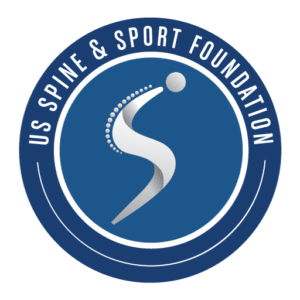August 30, 2018, San Diego, CA: New study shows benefits of worksite exercise for prevention of lost work time related to low back pain and injury in firefighters
Preliminary results of a new study suggest that a worksite exercise program targeting the back and core muscles can prevent lost work time related to low back pain and injury in firefighters. These results were presented at the FEMA Assistance to Firefighters Grants Program, Fire Prevention & Safety, Research & Development Annual Meeting on August 9, 2018 in Dallas, TX.
Firefighting is a dangerous, physically-demanding, and psychologically-stressful occupation. Thus, firefighters are at high risk for developing low back pain and injury, a leading cause of disability in this group. Novel interventions are needed to prevent the adverse consequences of this disorder and its impact on firefighter safety and health. Previous research by this team demonstrated that in firefighters: 1) a relationship exists between poor back muscular endurance and increased prevalence of low back pain; and 2) a pragmatic worksite exercise program is safe and effective for improving back and core muscular endurance.
In the current study, among firefighters who lost work time related to low back pain or injury during the 12-month intervention period, those who performed an on-duty back and core exercise program – delivered via direct supervision or a web-based application – experienced less lost work time related to low back pain or injury compared to control.
“I’d like to thank the research team and fire service partners for successfully completing a large-scale clinical trial with a novel and complex research design. Back pain is problematic globally and disproportionately affects first responders who put their lives in danger to protect us. Preliminary findings suggest that an efficient exercise program for firefighters is beneficial to prevent lost work time related to low back pain and injury. Assuming confirmation of findings by the scientific peer-review process, the study provides evidence to support future research and program implementation initiatives for an important aspect of firefighter wellness, fitness, and quality of life,” said John M. Mayer, DC, PhD, FACSM – principal investigator of the current study and the team’s previous research.
About the study
The study was a full-scale injury prevention trial that was sponsored by FEMA through a Fire Prevention & Safety, Assistance to Firefighters Grant, and was conducted at the University of South Florida. Study participants consisted of 264 active duty career firefighters from 4 departments in Florida – St. Petersburg Fire Rescue, Tampa Fire Rescue, Hillsborough County Fire Rescue, and Temple Terrace Fire Department. Participants were randomized by fire station to one of three groups – supervised exercise, web-based exercise, or control. Exercise group participants performed a 10-minute series of back and core exercises at work each time they were on duty, 2X / week for 1 year, delivered via direct supervision by peer fitness trainers (supervised group) or a web-based application (web-based group). Control group participants received 1 hour of education on general health and wellness. All participants continued their usual physical fitness activities. The primary outcome for the study was lost work time due to low back pain or injury.
Comparison among the firefighters who lost work time related to low back pain or injury during the 12-month intervention period indicated that firefighters in both exercise groups experienced less lost work time than control. Furthermore, firefighters in the web-based exercise group experienced less loss work time than the supervised exercise group. For each hour of lost work time due to low back pain or injury experienced by the supervised exercise group, the control group experienced 1.15 hours of lost work time (95% CI: 1.04, 1.27; p = 0.008). For each hour of lost work time due to low back pain or injury experienced by the web-based exercise group, the control group experienced 5.51 hours of lost work time (95% CI: 4.53, 6.70; p < 0.0001) and the supervised group experienced 4.8 hours of lost work time (95% CI: 3.9, 5.9; p < 0.0001). Qualitative reports by firefighter participants made during focus groups and other self-report measures reinforce the positive impact of the exercise program.
Charity L. Lane, MS, MA, CPT, USAW, FNS – the study’s project leader – commented, “Participants who were adherent to the protocol reported very positive results throughout the study. Many stated that they felt more confident in putting on their gear and performing their job duties even after a few weeks of performing the exercises. In addition, participants noted that they felt more confident in their study peer’s ability to perform job tasks, thus they felt safer at work. Overall, participants were very receptive to these positive physical changes and stated that they would like to see this type of exercise program implemented in their department. I am happy to have been part of such an innovative and successful effort and look forward to seeing it through to implementation nationwide.”
About U.S. Spine & Sport Foundation
U.S. Spine & Sport Foundation is a 501c3 non-profit organization that was established in 1994. Its mission is to develop, test, and implement strategies to improve quality of life and physical function through research and related knowledge translation efforts. For more information, see: www.usspineandsportfoundation.com.
